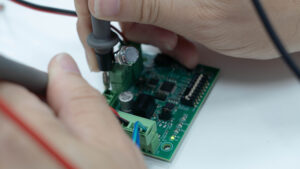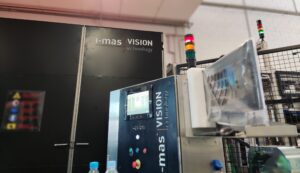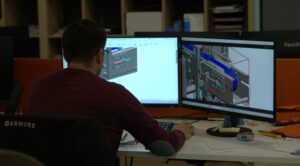In recent years, Industry 4.0 has transformed factories through digitization, industrial automation, and artificial vision. However, a new stage is taking shape: Industry 5.0. A model that goes beyond technology to focus on people, sustainability, and adaptability in the face of change.
The European Commission defines Industry 5.0 as a complementary paradigm to 4.0, which seeks more resilient, sustainable, and people-centered production. It is not just about increasing efficiency, but about building a productive system that responds to the environmental, social, and economic challenges of the future.
From total automation to human-machine balance
In Industry 4.0, automation and robotics took center stage. Smart factories connected machines, sensors, and control systems in real time to optimize industrial processes. Industry 5.0 maintains these foundations but reintroduces the human role as an essential element of innovation.
The goal is not to replace operators, but rather to enhance their capabilities through collaborative technologies: robots that assist with repetitive tasks, artificial vision systems that guide quality control, and digital tools that convert data into decisions accessible to all levels of the plant.
The result is more flexible, creative, and secure production, where technology amplifies human experience and judgment.
Industrial resilience: adapting without stopping
The pandemic and global volatility have highlighted the need for resilience in industrial processes. The factories of the future must be able to adapt quickly to new market conditions, materials, or demand.
The combination of intelligent automation, digital traceability, and data analysis makes it possible to anticipate deviations, redistribute workloads, and maintain production even in uncertain environments. Self-adjusting systems, continuous learning, and collaboration between humans and robots are the pillars of this new industrial resilience.
Sustainability as the cornerstone of modern engineering
In Industry 5.0, sustainability is no longer an added value but a design criterion. Engineers must develop solutions that reduce energy consumption, optimize materials, and minimize waste.
Artificial vision and real-time control systems help detect energy inefficiencies or early defects, preventing waste and rework. In turn, advanced robotics allows for the automation of recycling, reconditioning, or material sorting operations, promoting the circular economy.
This transition towards sustainable and smart production not only improves profitability, but also responds to growing social and regulatory demands for environmental responsibility.
The role of engineering in the 5.0 transition
The evolution towards Industry 5.0 requires a comprehensive vision of engineering. It is no longer enough to integrate automated systems: it is necessary to design collaborative ecosystems, where machines learn, processes optimize themselves, and people maintain strategic control.
This involves combining disciplines: industrial automation, artificial vision, robotics, traceability, and data analysis, all under a human-centered philosophy. The key is to develop technology that complements the operator, not replaces them.
At I-MAS, we work to promote this new generation of industrial solutions, integrating advanced technologies with a sustainable and human approach. We design industrial automation, machine vision, and collaborative robotics systems that enable companies to adapt to change without losing competitiveness.
We believe that the future of engineering is not just about automation, but about humanizing technology. Because the factories of the future will be as intelligent as the people who drive them.
Want to learn more about our services? Contact us or visit our projects section!



